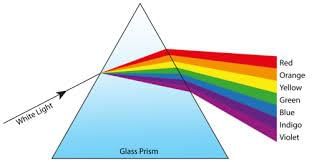Light | Year 8 Physics (Cambridge) - Class 8 PDF Download
Introduction to Light
Light is a form of energy that enables us to see the world around us. It travels in straight lines and can move through different mediums such as air, water, and glass.
Properties of Light
- Speed of Light: Light travels extremely fast at a speed of about 300,000 kilometers per second in a vacuum.
- Reflection: When light hits a surface, it can bounce back. This is known as reflection. Smooth, shiny surfaces like mirrors reflect light well.
- Refraction: Light can bend when it passes from one medium to another, such as from air to water. This bending is called refraction.
- Absorption: Some materials can absorb light, converting it into heat. Dark surfaces absorb more light than light-colored surfaces.
Examples of Light Properties
- Reflection: When you look in a mirror, you see your reflection because the light from your face hits the mirror and bounces back to your eyes.
- Refraction: A straw appears bent when it is placed in a glass of water due to the refraction of light.
Coloured Light
How We See Colors
We see different colors because of the way light interacts with objects and our eyes. White light, like sunlight, is made up of all the colors of the spectrum: red, orange, yellow, green, blue, indigo, and violet.

Dispersion of Light
When white light passes through a prism, it separates into its component colors. This process is called dispersion. The colors spread out to form a spectrum, which is often seen in a rainbow.
Color Absorption and Reflection
Objects appear a certain color because they reflect that color of light and absorb the other colors.
For example:
- A red apple looks red because it reflects red light and absorbs other colors.
- A blue sky appears blue because molecules in the air scatter blue light from the sun more than they scatter red light.
Mixing Colors
- Primary Colors of Light: Red, green, and blue are the primary colors of light. By mixing these colors in different combinations, we can create other colors.
- Secondary Colors: When two primary colors are mixed, they form secondary colors.
For example:- Red and green make yellow.
- Green and blue make cyan.
- Blue and red make magenta.
Examples of Color Mixing
- Television and Computer Screens: These screens use tiny pixels of red, green, and blue light to create the wide range of colors we see.
- Stage Lighting: Stage lights often use colored gels to mix different colors of light to create mood and atmosphere in a theater production.
Summary
Light is a fascinating and essential part of our world, enabling us to see and experience colors. Understanding the properties of light, such as reflection, refraction, and absorption, helps us to comprehend how we see and interact with our environment. Coloured light, with its primary and secondary colors, plays a crucial role in everything from technology to nature, making our visual experiences vibrant and diverse.
|
8 videos|39 docs|11 tests
|
FAQs on Light - Year 8 Physics (Cambridge) - Class 8
| 1. What are the properties of light? |  |
| 2. How does light interact with different materials? |  |
| 3. What is coloured light and how is it produced? |  |
| 4. How do UK schools teach about light to students? |  |
| 5. Why is understanding light important in everyday life? |  |





















